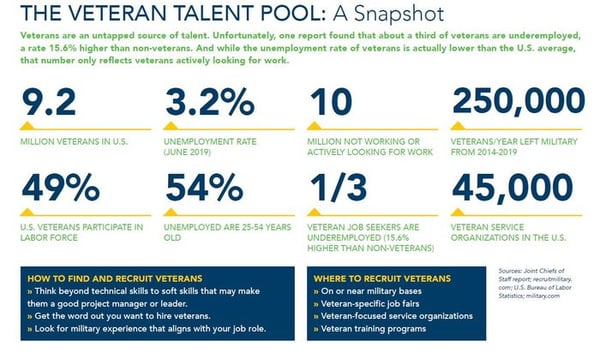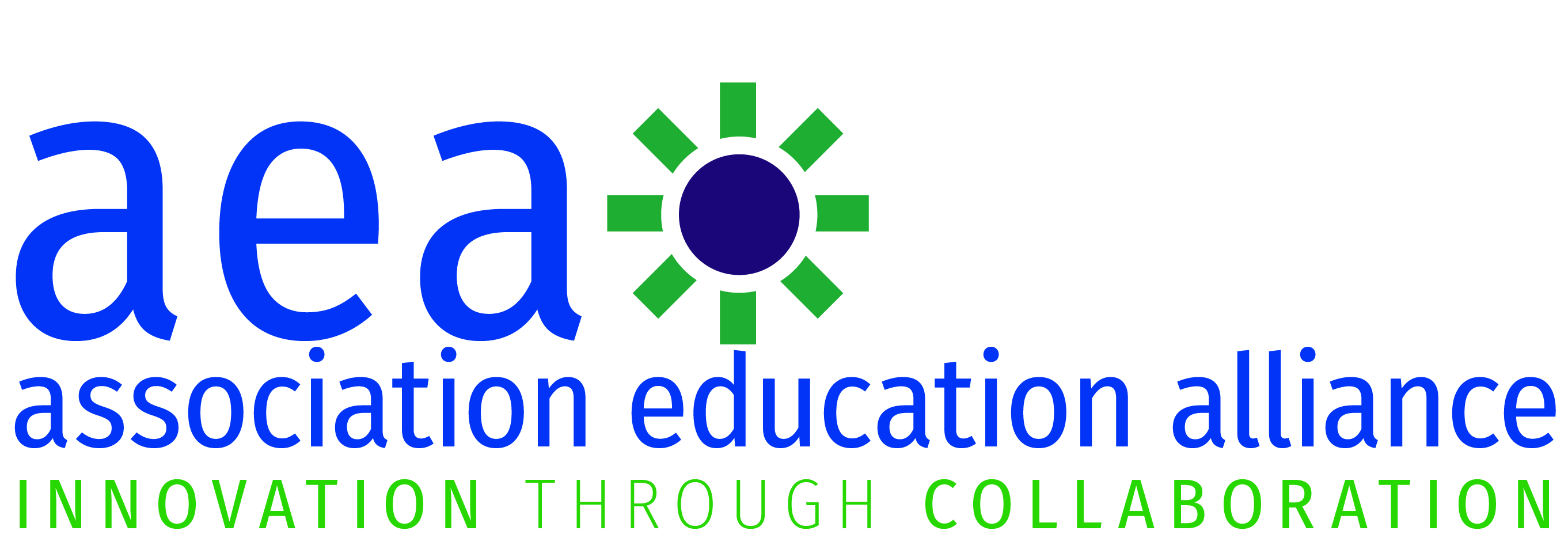Talent Acquisition Strategies for Distributors Facing Labor Shortage
 NAHAD is a member of The Association Education Alliance (AEA), a collective of 40+ wholesaler-distributor trade associations. The AEA commissioned a report on behalf of its distribution association members to identify challenges and best practices in talent acquisition. The analysis and recommendations provided in the following article are based on interviews with distributors, HR and education experts, as well as results from an online survey of about 190 distributors and manufacturers.
NAHAD is a member of The Association Education Alliance (AEA), a collective of 40+ wholesaler-distributor trade associations. The AEA commissioned a report on behalf of its distribution association members to identify challenges and best practices in talent acquisition. The analysis and recommendations provided in the following article are based on interviews with distributors, HR and education experts, as well as results from an online survey of about 190 distributors and manufacturers.
The labor shortage the distribution industry is facing is real, pervasive, and very likely to grow worse before it gets better.
Where a decade ago, many workers were desperate to find jobs, recruiters and employers now find themselves in heated competition for workers, a reflection of a low overall nationwide unemployment rate of 3.7%, according to the July 2019 report from the Bureau of Labor Statistics. In late 2018, the recruiting software provider Jobvite called 2018 a “tipping point” for recruiters struggling to fill jobs, and called on them to re-evaluate recruiting methods.
At a time when many economists and political and civic leaders bemoan the disappearance of good-paying manufacturing jobs, many in North America may be surprised to learn that many distributors and manufacturers have jobs to fill and consider the lack of qualified, skilled job candidates a serious challenge, or even a crisis.
Yet the data is clear.
By 2018, the manufacturing sector alone reported 508,000 open jobs, according to research conducted by Deloitte and The Manufacturing Institute. The Deloitte research projects there will be 4.6 million manufacturing jobs to fill by 2028, with only 2.2 million of those jobs likely to be filled.
What’s driving the labor shortage?
While the data and projections remain bleak, the factors cited as major contributors to the labor shortage have shifted.
In 2015, mass Baby Boomer retirement was blamed as the major culprit in the labor shortage, according to the Deloitte study. Indeed, AARP estimates that 10,000 people in the United States turn 65 every day, a trend that will continue until 2030. Nevertheless, by 2018, retirement had dropped to No. 3. The top two reasons that emerged in the interim were: technology changes and misconceptions about the manufacturing industry.
As distributors adapt to and try to remain competitive in the so-called Fourth Industrial Revolution, they must increasingly embrace technologies such as artificial intelligence (AI), robots, the Internet of Things (IoT) and machine learning. That has created an accompanying shift in the skills and experience distributors value most in prospective employees.
According to the Deloitte research, the most coveted and necessary skills today involve computer and technology experience, skills for programming automation, and critical thinking.
The third most-commonly cited reason, the perception of the industry, is something Tom Newell, regional vice president of EMCO Corp., an Ontario-based distributor of plumbing, HVAC and refrigeration, waterworks, and industrial material, is familiar with.
“There is so much pressure we put on kids to get white-collar jobs and pursue professional or post-secondary education, which for many is a waste of money and time,” he said. “Parents don’t want their kids doing ‘dirty work’.”
But the technical revolution means that few distribution or manufacturing jobs today involve the back-breaking, heavy-lifting labor associated with those industries in the past. But while that could potentially make distribution and manufacturing jobs more attractive, greater automation means more complex jobs, and employers are demanding workers with a growing assortment of highly technical skills – a factor that further restricts the available labor pool.
What’s Working – and What’s Not
Through outreach to distributors for this research, we found that most are using a combination of tried-and-true methods – from online job boards and professional recruiters to incentives for employee referrals and social media. And those approaches are generating mixed results.
The most commonly cited means of searching for employees in the AEA survey was online job boards – more than 88 percent said they used those, but were also the tactic most often cited as not helpful.
Few respondents cited college-campus recruiting as a good source of new employees, but Bruce Passmore, region manager, HVACR Canada East at EMCO Corp., considers college campuses one of his company’s most fertile recruiting territories.
Referrals from existing employees ranked second as the method that worked best for survey respondents. Social media was cited as not effective by many, though nearly 60% of respondents use it as a tool to reach prospects. Many also said placement agencies have not been effective for them.
Some respondents had a much more dire outlook, saying that nothing is working. The number of candidates is limited, and competition with other industries is just too great, one wrote.
Why Distributors Need to Shift Hiring Expectations
Given the many challenges to recruiting workers, it’s no surprise that the recruiting experts at Jobvite advise those trying to fill positions to “evolve” – to investigate alternative methods of searching for employees, and to think more about the qualities and qualifications that make a successful or desirable employee.
Some respondents reported that shift in expectations was working for them: Those who are willing to hire employees based on potential rather than actual experience were successful in finding employees able to adapt and fit the needs of the job.
Successfully accomplishing that means more than simply putting together a list of qualifications for a prospective employee, said Jia Wang, professor of human resource development at Texas A&M University and author of Optimizing Human Capital Development: A Distributor’s Guide to Building Sustainable Competitive Advantage Through Talent Strategy published by the National Association of Wholesaler-Distributors.
Companies must know exactly what they are looking for in a worker, not just what technical skill set they want, Wang said. Culture is another consideration. Not only are employees looking for a good cultural fit, but also one that provides the training and tools they need to flourish. Wang recommends going one step further, talking to long-time employees about why they stay, and what value the company gives them, instead of always viewing the relationship from the other way around.
“We do exit interviews,” Wang said. “But we don't ask people, ‘Why do you stay? What makes you stay besides compensation?’” If all a company offers is superior pay, she said, it probably won’t retain employees long, particularly millennials.
With competition for qualified employees expected to become even more intense, implementing effective recruitment strategies has become more critical than ever. To help, we’ve outlined four strategies distributors are using to successfully overcome the growing skills gap, according to our research:
Hire Carefully, Train Thoroughly
With a growing skills gap at play, hiring people that have the right skills for the job is increasingly difficult. Some distributors are experiencing success through apprenticeship-style programs. The premise behind these training programs is to hire individuals that demonstrate the capacity and desire to learn and then position them for success through training tiers. They help employees acquire job-ready skills through hands-on training and ensure employee longevity through advancement opportunities.
Rethink your Messaging
Employment in wholesale distribution is not often perceived as glamorous, certainly not as glamorous as a job working for a tech company like Apple. So, how can distributors attract recruits? Wang believes it begins with a well-developed job description. Recruitment efforts should not only convey the basic job functions, but also appeal to the emotional meaning behind the work. This is especially important when looking to attract millennials and Gen Z employees.
Tap into the Veteran Talent Pool

Some distributors are taking advantage of an underutilized talent pool, veterans. About one-third of veterans are underemployed, a rate 15.6 percent higher than non-veterans. Veterans are appealing to employers because they have learned discipline through their service, have gained experience working with their hands and understand the time required of many tasks. One distributor said, “I love military applicants, because a sense of discipline is very important.”
Get Involved with Colleges and Implement Internships
 Distributors are going beyond career center job postings when looking to recruit from colleges and universities. Creating deeper relationships with the faculty and students yields better results. Getting more involved in campus activities, speaking engagements and internship programs has improved the talent pipeline and given both employers and prospective employees a realistic preview of what it would be like to work together and if it’s a good fit before hiring.
Distributors are going beyond career center job postings when looking to recruit from colleges and universities. Creating deeper relationships with the faculty and students yields better results. Getting more involved in campus activities, speaking engagements and internship programs has improved the talent pipeline and given both employers and prospective employees a realistic preview of what it would be like to work together and if it’s a good fit before hiring.
Download and read the full whitepaper at NAHAD.org.
About Joanna Truitt
Joanna Truitt is the Executive Director of the Association Education Alliance (AEA), a collective of over 40 wholesale-distributor trade associations that meet regularly to provide educational programs, collaboration opportunities and support for AEA members. For more information on how the Association Education Alliance helps wholesale distributors through educational programs and partnerships, email Info@AEAmembers.net.



